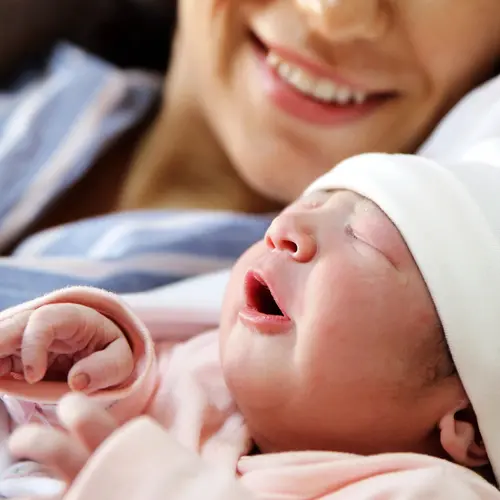Conjoined twins are twins who are physically attached to one another. It's a very rare situation, and it comes with many complications during pregnancy, delivery, and after the babies are born.
They are sometimes called Siamese twins in reference to a famous pair of conjoined twins from Thailand (formerly Siam) named Chang and Eng Bunker. They were performers with a traveling exhibition in Europe and America in the 1800s.
Modern medicine makes it possible for some conjoined twins to be surgically separated. Others stay connected for their whole lives. Most conjoined twins need medical care for the rest of their lives to help manage their long-term health.
What Causes Twins to Be Conjoined?
Conjoined twins are monozygotes, which means they begin as one fertilized egg that splits into two embryos. Typically, when an egg splits, the babies are born as identical twins. In very rare instances, the separation of the embryos isn't complete. Scientists aren't sure how it happens. They think the eggs either never entirely separate, or they reattach shortly after separating.
Conjoined twins are very rare. Doctors estimate that only 1 in 200,000 live births result in conjoined twins. More than half of conjoined twin pregnancies result in miscarriage or stillbirth. Many conjoined twins die shortly after birth.
What Happens if I'm Pregnant With Conjoined Twins?
Doctors usually discover twins are conjoined from looking at an ultrasound in the first or second trimester of pregnancy. If that happens, the doctor will suggest follow-up testing to learn more about the twins' bodies and what organs they might share.
Doctors will counsel expectant parents on what to expect in the pregnancy and the birth. In some cases, the twins' condition is not compatible with life. When that happens, parents will need to decide how to proceed with the pregnancy. Your doctor can discuss your options with you and offer the best care for your family.
Most conjoined twins need to be delivered by cesarean section, or a C-section. A specialized medical team will be standing by to take care of them right after birth.
Are There Different Types of Conjoined Twins?
Not all pairs of conjoined twins are attached the same way. Their bodies can be connected in different areas:
- Chest (thoracopagus). The twins face each other and are connected in the ribcage area. They usually share a single heart and might also share a liver. They tend to have four arms and four legs.
- Abdomen (omphalopagus or xiphopagus). The twins face each other and are connected below the sternum. They might share a liver, a biliary tract, and an upper digestive tract. They usually have four arms and four legs.
- Lower back (pygopagus). The twins are back-to-back and may share genital organs, a urinary tract, a lower digestive tract, and the bones and nerves of the lower body. They might have two or three legs, though this is uncommon.
- Pelvis (ischiopagus). The twins are connected at the pelvis and may or may not face each other. They might share a liver and biliary tract, parts of the upper and all of the lower digestive tract, and the genital and urinary systems. They might have two or three legs.
- Head (craniopagus). The twins are connected at the top of the skull. Their brains are usually connected, though not always.
Can Conjoined Twins Be Separated?
Not all conjoined twins are good candidates for surgery to separate them. For twins who share vital organs such as a heart, surgery isn't an option. Doctors usually wait three months to a year after the birth of conjoined twins to decide on separation. This is to give the twins time to grow strong enough for the operation and to take time to understand the twins' bodies before surgery.
In some cases, conjoined twins need emergency separation surgery. If one twin dies or has a life-threatening medical event, the surgery might save the other twin's life.
Elective separation surgery is a very complicated procedure. Families may need to travel to find a hospital that can do the operation. Depending on what the twins need after the surgery, they may even have to relocate to be near the twins' medical team. Children will need specialized follow-up care, including physical and occupational therapy.
Some conjoined twins do not undergo separation surgery and grow into adulthood still conjoined. Conjoined twins may need accommodation for transportation and housing as they grow up. Some pairs go on to live independent lives and have careers and relationships.


